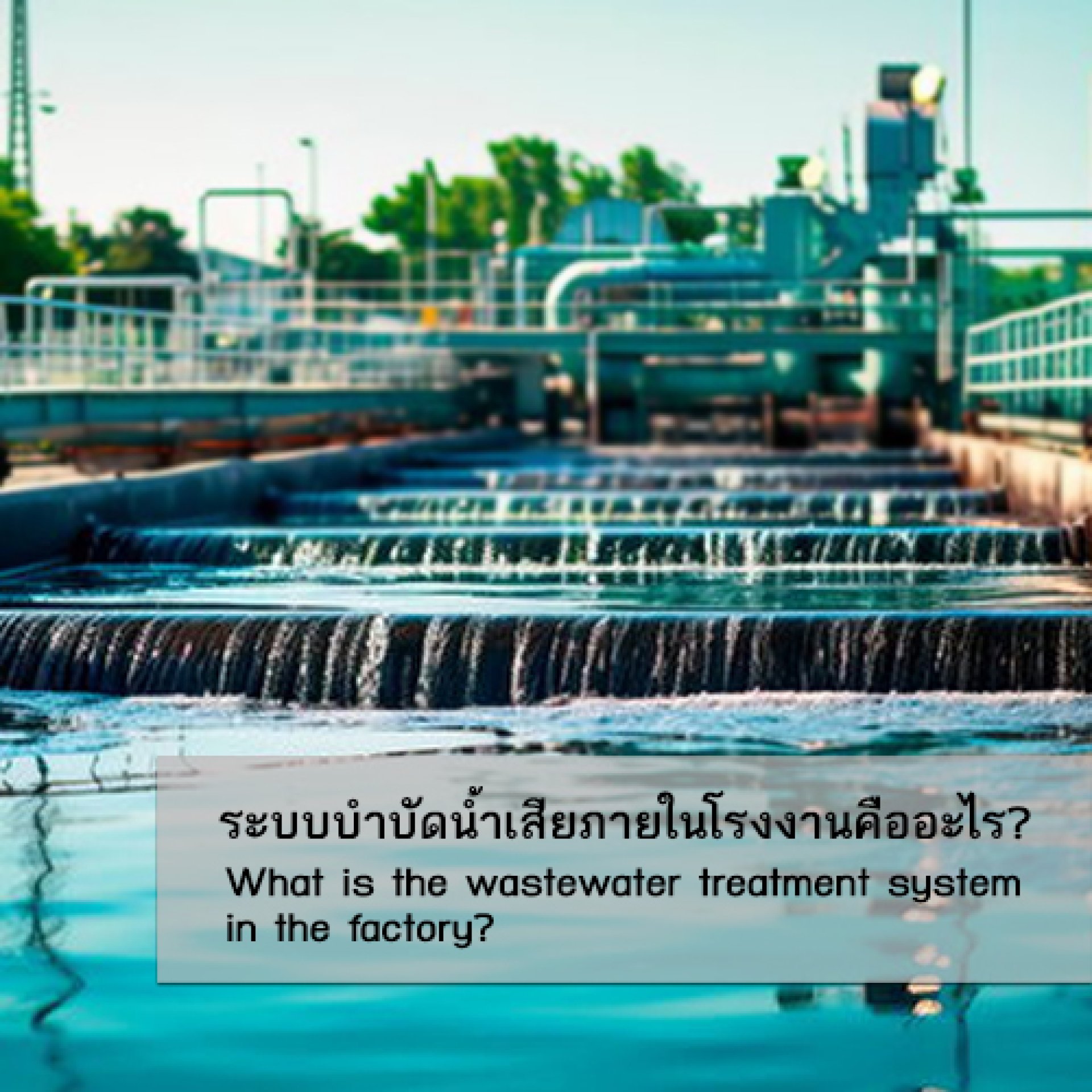What is a wastewater treatment system in a factory?

Get to know the wastewater treatment system in the factory.
Factory wastewater treatment system
Industrial wastewater treatment systems are systems invented to remove contaminants in water that are generated from the production processes in various industrial plants. Industrial factories are another place that releases a large amount of wastewater, some of which is secretly released without treatment. This action has an impact on the environment. Wastewater treatment systems in factories will help improve the quality of wastewater released from factories, reducing environmental impacts. Change the concept and campaign to make industrial factories realize the importance of wastewater treatment before releasing it from the factory.
Advantages of factory wastewater treatment systems
- Helps improve water qualityWastewater treatment systems in industrial plants are considered important systems because industrial plants are one of the important places that have a large amount of wastewater. Therefore, before draining the water, it is necessary to treat it to improve its condition to prevent environmental pollution.
- Help reduce resource consumptionSince treated wastewater can be reused, it significantly reduces resource consumption
Wastewater treatment systems in industrial plants can treat wastewater to bring it back to good quality. Currently, there are 3 systems as follows:
- Physical wastewater treatment system
Physical wastewater treatment systems are a necessary initial wastewater treatment
because physical wastewater treatment uses human labor and machinery to separate
out wastes that can be captured from the water, such as sand, gravel, wood scraps,
paper scraps, concrete fat, mud, tapioca starch water, etc. There are many different
methods for this system, but this article will recommend three methods as follows:
1.1 Screening : This method uses a screen to catch debris and various types of waste
that flow with the wastewater to prevent them from getting stuck in the machinery
used in the next treatment step. It is important to choose a screen that is appropriate
for the size of the object to be caught.
1.2 Grit Removal : For contaminants that cannot float in the water, such as gravel,
rocks, soil, sand or metals, a sedimentation wastewater treatment system is used
instead, using a sedimentation tank.
1.3 Oil and Grease Removal : The easiest, most convenient and most popular method
of removing oil and grease is to create a grease trap and use manual labor to clean and
scoop it out on a daily basis. - Chemical wastewater treatment system
The next wastewater treatment system is the chemical wastewater treatment system.
This wastewater treatment system can treat a variety of wastewater types. However,
it must be selected to suit the wastewater conditions to be treated in order to achieve
maximum efficiency. However, wastewater treatment with this system is not
considered complete because there are still organic substances remaining. Therefore,
it should be sent for further treatment with a biological system. This article
recommends three methods as follows:
2.1 Chemical Coagulation : Most wastewater treatment systems typically precipitate
everything from the water. This method also helps to remove contaminants from
wastewater, but it does not use the same equipment as physical wastewater treatment
systems. Instead, chemicals are added to the water to react with negatively charged
suspended solids such as clay, dyes from bleaching plants, and heavy metals.
The chemicals used must contain positive charges, such as Poly Aluminium Chloride 10%, Ferrous Chloride, Ferrous Sulfate, Ferric Chloride, and Alum.
2.2 Neutralization : In order for wastewater that has undergone physical or chemical
processes to be treated by biological processes, the wastewater must have an
appropriate pH value, between 6.5 and 8.5. If it is to be released into nature, the pH
value must be between 4 and 9. Therefore, if the wastewater is too alkaline, caustic soda (NaOH), lime (CaO), or ammonia (NH3) can be added to neutralize it. If it is too acidic,chemicals such as sulfuric acid (H2SO4), hydrochloric acid (HCL), or carbon dioxide (CO2) can be added.
2.3 Disinfection : Germs and bacteria are another factor that prevents the release of
untreated wastewater into nature. To eliminate germs in wastewater, a chemical wastewatertreatment system must be used to manage it by adding chlorine, chlorine compoundsor phenol compounds to the wastewater. - Biological Wastewater Treatment Systems
Biological wastewater treatment systems are a complementary system to the physical and chemical wastewater treatment systems that cannot be completely eliminated. This system cultivates microorganisms in wastewater under controlled conditions to allow them to decompose organic matter in the wastewater, converting it into sediment and separating it from the water. These systems can be divided into two main methods:
3.1 Aerobic Wastewater Treatment : This process utilizes oxygen as a solvent for microorganisms. The microorganisms then decompose organic matter in the water, precipitating it and separating it from the water.
3.2 Anaerobic Wastewater Treatment : This process requires the water to be placed in a vacuum. The result of this process is the development of two groups of bacteria: acid-producing and methane-producing bacteria. Both groups are responsible for decomposing organic matter in the wastewater. The key is to ensure proper environmental control and pH levels for both groups of bacteria. Otherwise, neither group will be able to decompose organic matter.
From all the information in this article, it can be seen that wastewater treatment systems in industrial plants are extremely important and beneficial to the environment. They can treat wastewater to a good condition before releasing it into rivers and will not cause any subsequent impacts.


